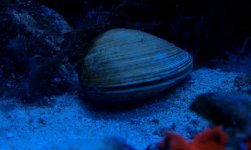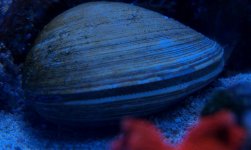mandown123
Advanced Reefer
- Location
- Staten Island, NY
I had 2 dozen cherrystones for the Superbowl. I couldn't open one of them and decided to give him a fighting chance in the reef.
The clam seems like it is actually pretty happy over two weeks later. It opens up a little bit and sticks out a feeding tube or something.
Pretty funny.
The clam seems like it is actually pretty happy over two weeks later. It opens up a little bit and sticks out a feeding tube or something.
Pretty funny.








